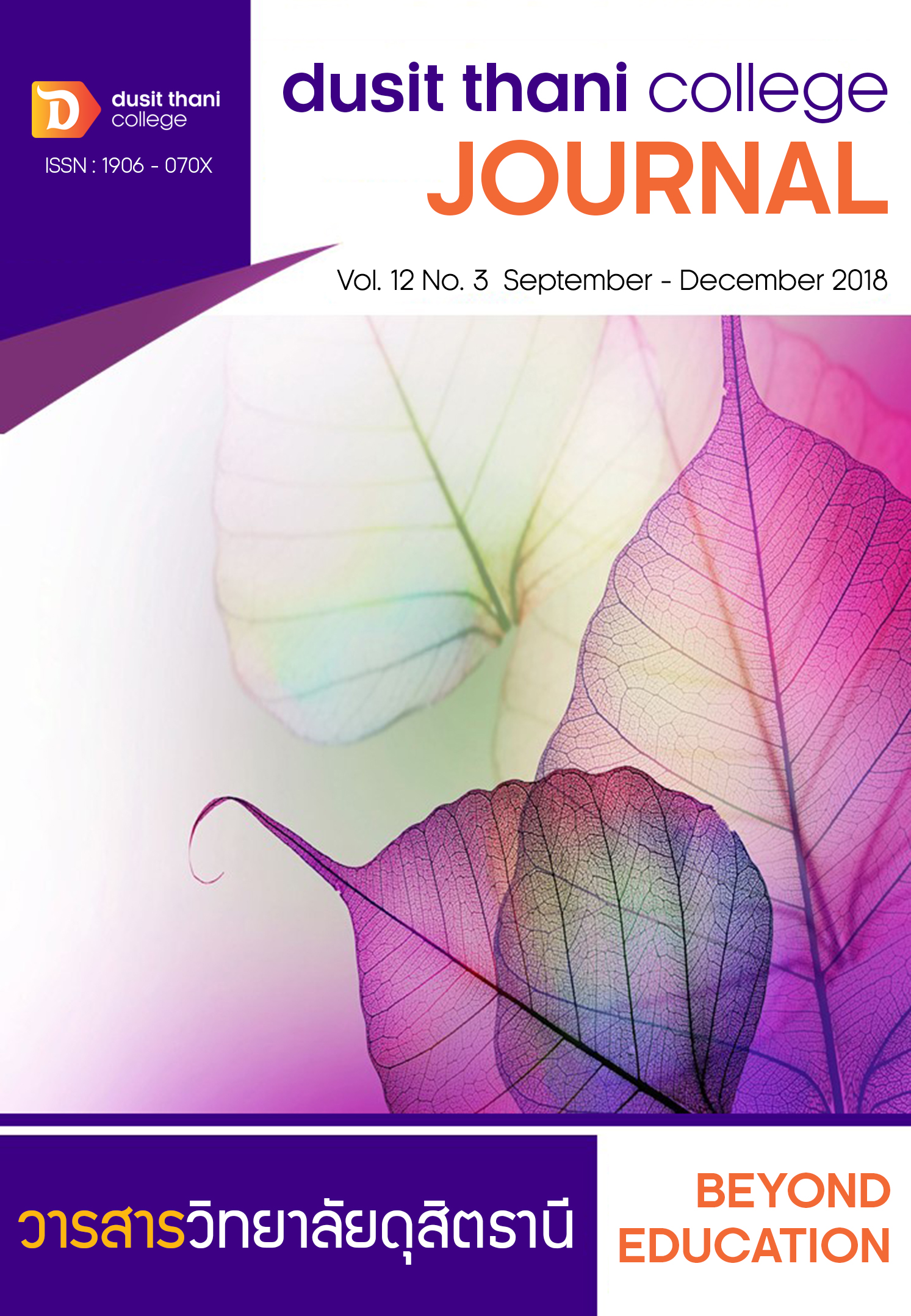Sustainability of Farmers’ Career in Krathum Baen District, Samut Sakhon Province
Main Article Content
Abstract
The purpose of this research aims to study the sustainability of farmers’career and analyze the sustainability levels of household and district level in Krathum Baen district, Samut Sakhon province. In order to obtain information for planning and development of existing landowners to be able to sustain their original occupation in a fast changing world. By using participatory research, storing binary data from group meetings and interview farmers. The results of the research on the sustainability of the farmer's career at the household level showed that, nearly all of households were included in the conditional sustainability category (95 %), sustainable households (2.5 %), and non-sustainable households (2.5 %), from sustainability value at district level 50.67. So that, the farmers in Klongmaduea Sub-District are not sustainable on their career. Considering of indicators showed that, the three significant Indicators that affect the sustainability are household labors, agricultural training and water pollution. The results of the research suggested that farmers should bring technology into the production process to increase the efficiency and replacement of agricultural labour shortage. The result also showed the government should ensure the relevance of training in reducing production costs and increasing productivity. Meanwhile, Organizations are involved in environmental management should follow-up of evaluation results and environmental protection of quality supervision to meet the standard set.
Article Details
Article Screening Policy
- All research and academic articles to be published must be considered and screened by three peer reviews in the relevant field / article.
- All articles, texts, illustrations and tables published in the journal are the personal opinions of the authors. Editors don't always have to agree. And no responsibility whatsoever is the sole responsibility of the author.
- The articles to be published must never be published. Where did you first publish? And not in the consideration of other journals If the audit found that there has been a duplicate publication It is the sole responsibility of the author.
- Any article that the reader sees as being plagiarized or impersonated without reference. Or mislead the work of the author Please let the journal editor know it will be your greatest blessing.
References
2. Department of Environmental Quality Promotion (2011). To survey and study of water quality and to find the way to manage wastewater of Wat Lumpaya floating market. Bangkok : Ministry of Natural Resources and Environment. (In Thai)
3. NaRanong, A. (2015). Toward a Less Chemically-Dependent Agriculture: A Study on Some Farmer Groups in the Chanthaburi and Pathum Thani Provinces. Journal of Public and Private Management, 23(2), 93-118. (In Thai)
4. Payutto, P. (1996). Sustainable Development. 1 st ed. Bangkok: Sahadhammika Co.,LTD. Publishing House. (In Thai).
5. Praneetvatakul, S. and Sirijinda, A. (2003). Sustainable Agricultural Systems Planning on
Highland Area of Northern Thailand. Bangkok : Kasetsart University. (In Thai)
6. The Office of Samut Sakhon Province. (2016). 4 Years Plan of Samut Sakhon Province (2017 – 2020). Retrieved March 25, 2017, from http://www.samutsakhon.go.th/document/plan%20sk.pdf. (In Thai)
7. Tansri, K. (2014). Labor and the change of Thai agriculture. Retrieved March 25, 2017, from https://www.bot.or.th/Thai/MonetaryPolicy/NorthEastern/DocLib_Research/04-Labor%20with%20Agri%20Changing.pdf. (In Thai).
8. Wattayo, W. (1997). Guidelines for community development planning process by the method of public participation : a case study of Chao-Chet Sanitary District,
Phra Nakhon Si Ayutthaya Province. Master of Urban and Regional Planning
(Urban Planning). Chulalongkorn University (In Thai).


